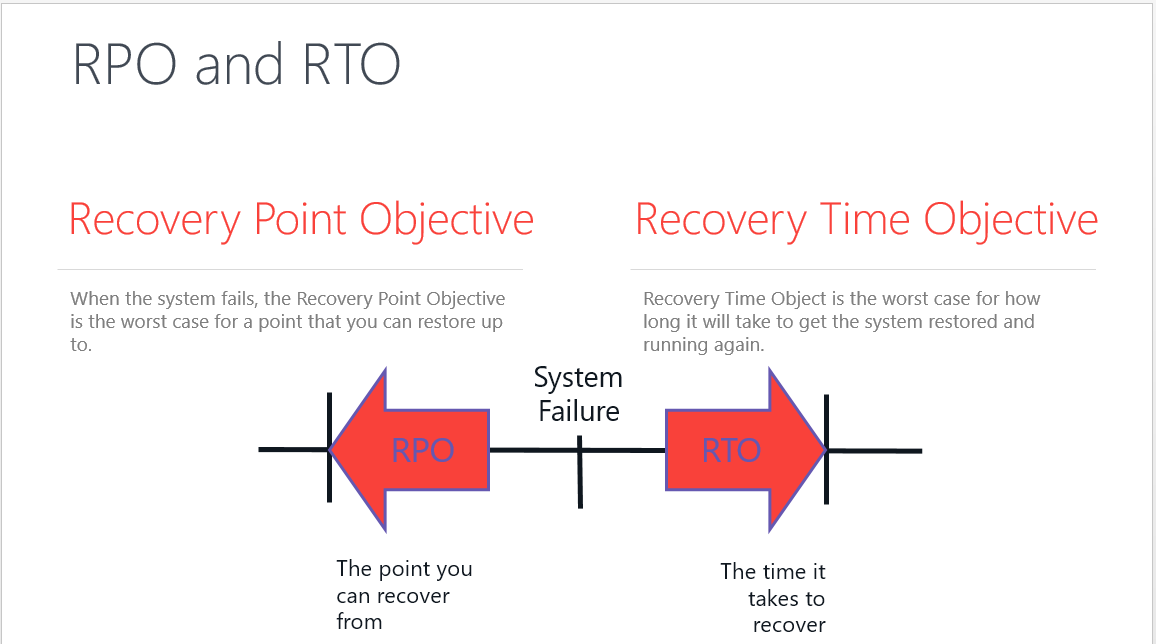SQL Server Recovery Point Objective vs. Recovery Time Objective

Recovery Point Objective (RPO) and Recovery Time Objective (RTO) are two important concepts in disaster recovery planning.
Recovery Point Objective (RPO)……
is the maximum amount of data that you are willing to lose in the event of a disaster. It is the point in time to which you want to be able to restore your data after a disaster. For example, if your RPO is set to 12 hours, this means that in the event of a disaster, you want to be able to restore your data to no more than 12 hours before the disaster occurred.
Recovery Time Objective (RTO)……
is the maximum amount of time that you are willing to wait to recover from a disaster. It is the amount of time it takes to restore your systems and data after a disaster has occurred. For example, if your RTO is set to 4 hours, this means that in the event of a disaster, you want to be able to restore your systems and data within 4 hours.
Together, RPO and RTO are used to determine the appropriate level of backup and recovery strategies for a given system. For example, if your RPO is set to 12 hours and your RTO is set to 4 hours, you might implement a backup strategy that involves taking hourly log backups, as well as daily full backups, in order to ensure that you can recover your data to within 12 hours of the disaster, and restore your systems within 4 hours.
Want to learn more about SQL Server Backups, take a look at our SQL Server Backup and Recovery Course. This complete course will help you determine if you have a sufficient backup strategy and restore plan OR will help you build one from scratch.
https://SteveStedman.com/backup
More from Stedman Solutions:

Steve and the team at Stedman Solutions are here for all your SQL Server needs.
Contact us today for your free 30 minute consultation..
We are ready to help!


Leave a Reply